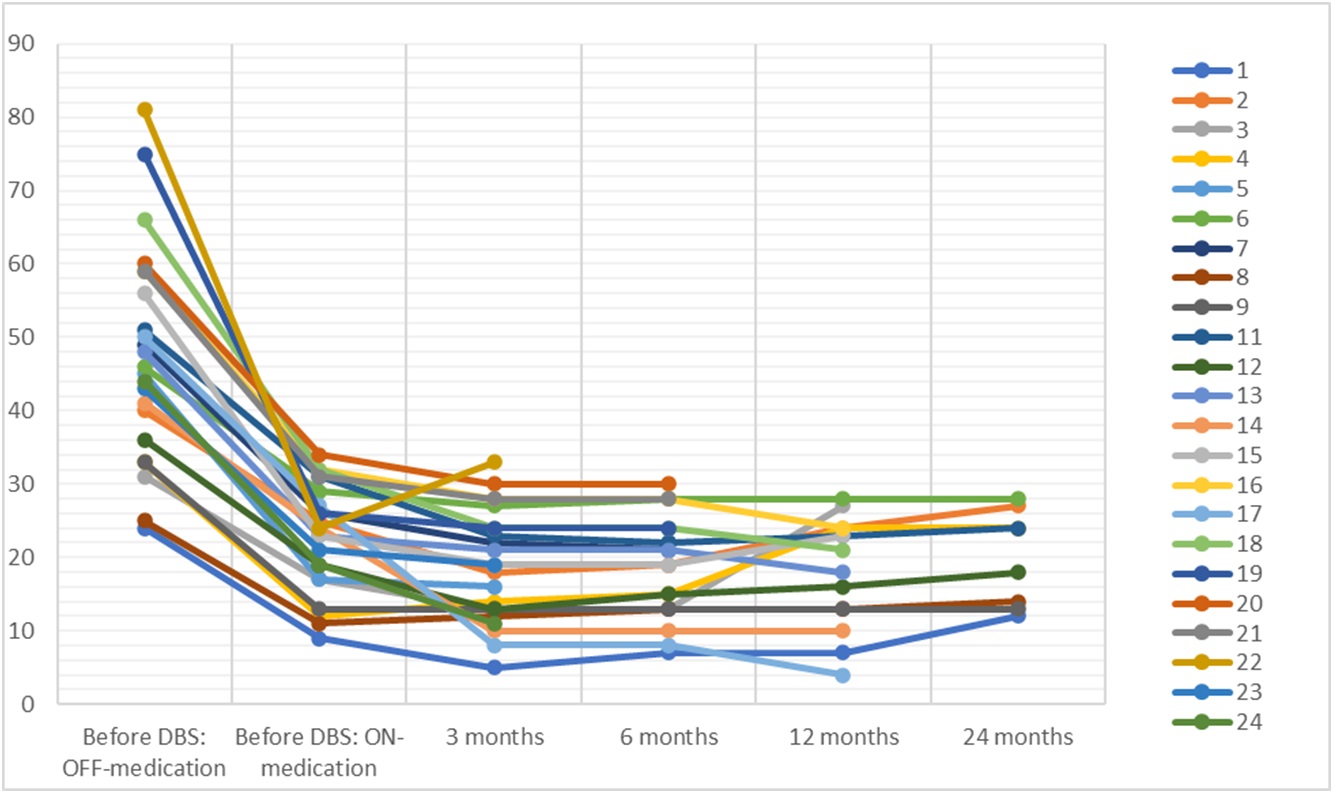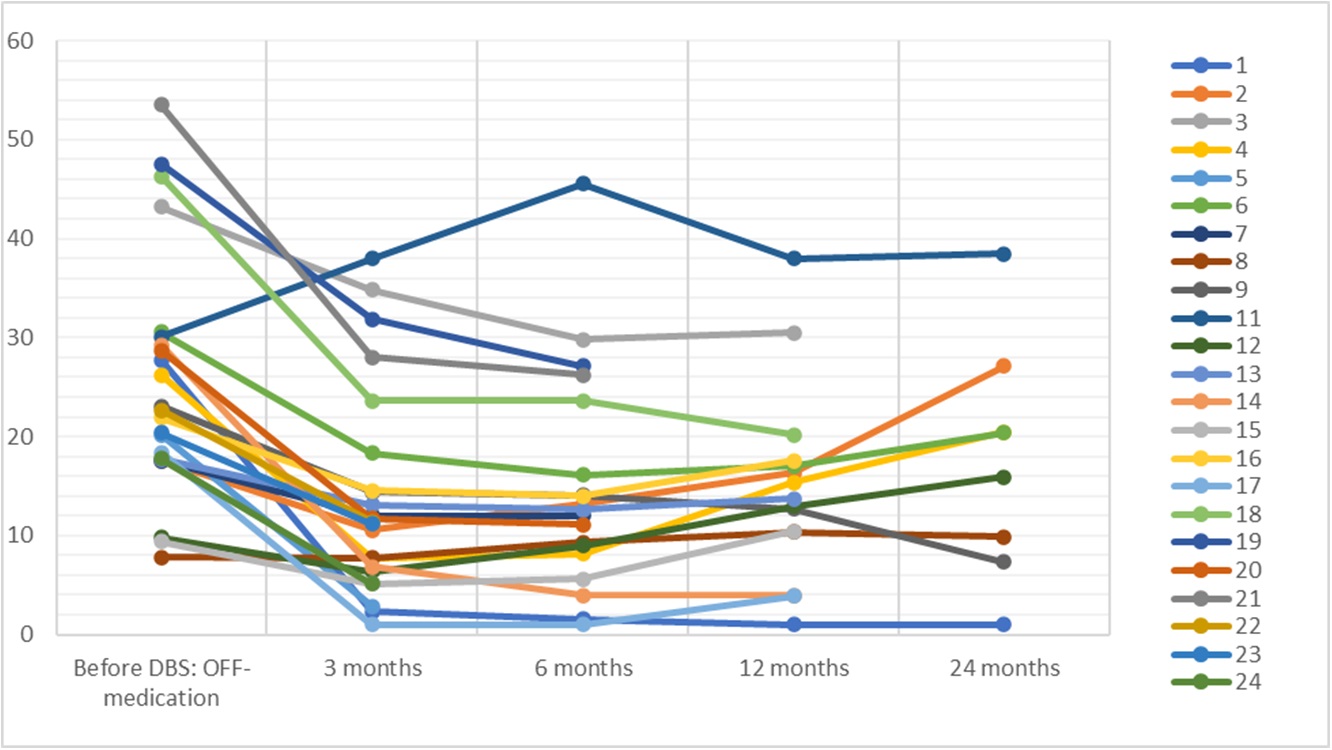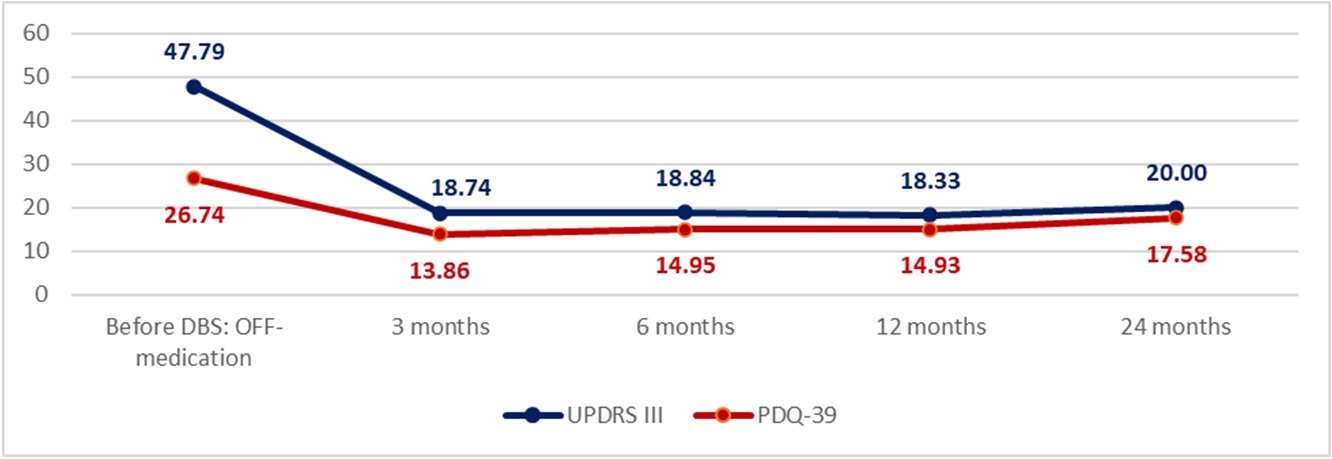Category: Surgical Therapy: Parkinson's Disease
Objective: The aim of this study was to examine the effects of bilateral subthalamic nucleus (STN) deep brain stimulation (DBS) on motor symptoms and quality of life (QoL) in patients with advanced Parkinson Disease (PD) receiving treatment at the University Hospital “St. Marina” in Varna, Bulgaria.
Background: Bilateral STN-DBS surgery may be highly beneficial for patients with advanced Parkinson’s Disease (PD) who have refractory tremor, dyskinesia, or motor fluctuations. While DBS significantly improves motor symptoms, the overall effect on QoL is more difficult to predict and is influenced by multiple factors, such as non-motor symptoms and comorbidities.
Method: Twenty-four individuals (17men and 7women) with a mean age of 61.7±7.5 and a mean time from first symptoms of 10.2±3.9 years were included in the study. The participants’ quality of life (QoL) was assessed using the Parkinson Disease Questionnaire (PDQ-39) and the Unified Parkinson’s Disease Rating Scale (UPDRS) at 3, 6, 12, and 24 months following the DBS surgery. Evaluations of the post-surgical UPDRS were conducted with stimulation turned on.
Results: Compared to the pre-DBS state, the motor and overall UPDRS scores in the DBS-ON state showed a significant (p<0.001) improvement throughout the course of the two-year follow-up period (Table 1). Upon examining each patient individually, we discovered significant variations in the motor and total UPDRS score dynamics, which can be explained by individual features of the patients, and neurostimulation constraints (Figure 1). With the exception of one patient who experienced severe non-motor symptoms, all patients’ overall QoL dramatically improved throughout the first year of follow-up (p<0.001) (Figure 2). Up to 18 months after surgery, we observed a steady improvement in both motor functioning and QoL, with a slight trend for QoL deterioration beyond this time (p=0.034). In spite of this, the average PDQ-39 score was still higher than it was prior to the DBS. There was a positive correlation between the changes in the motor UPDRS and the PDQ-39 score (Figure 3).
Conclusion: Bilateral STN-DBS is a highly effective treatment for advanced PD patients leading to significant improvement of their motor activities and QoL up to 2 years post-surgery. There was evidence of a positive correlation between the motor UPDRS and the QOL measured by PDQ-39.
Table 1. Dymanics in the UPDRS and PDQ-39 scores.
Figure 1. Individual dynamics in the motor-UPDRS.
Figure 2. Individual dynamics in PDQ-39 scores.
Figure 3. Trends of the mean UPDRS-III and PDQ-39.
To cite this abstract in AMA style:
M. Tsalta-Mladenov, V. Dimitrova, M. Moynov, S. Andonova, Y. Enchev. The Impact of Bilateral STN- Deep Brain Stimulation on Motor Symptoms and Quality Of Life in Advanced Parkinson’s Disease: A Single Center’s Experience [abstract]. Mov Disord. 2024; 39 (suppl 1). https://www.mdsabstracts.org/abstract/the-impact-of-bilateral-stn-deep-brain-stimulation-on-motor-symptoms-and-quality-of-life-in-advanced-parkinsons-disease-a-single-centers-experience/. Accessed April 1, 2025.« Back to 2024 International Congress
MDS Abstracts - https://www.mdsabstracts.org/abstract/the-impact-of-bilateral-stn-deep-brain-stimulation-on-motor-symptoms-and-quality-of-life-in-advanced-parkinsons-disease-a-single-centers-experience/




